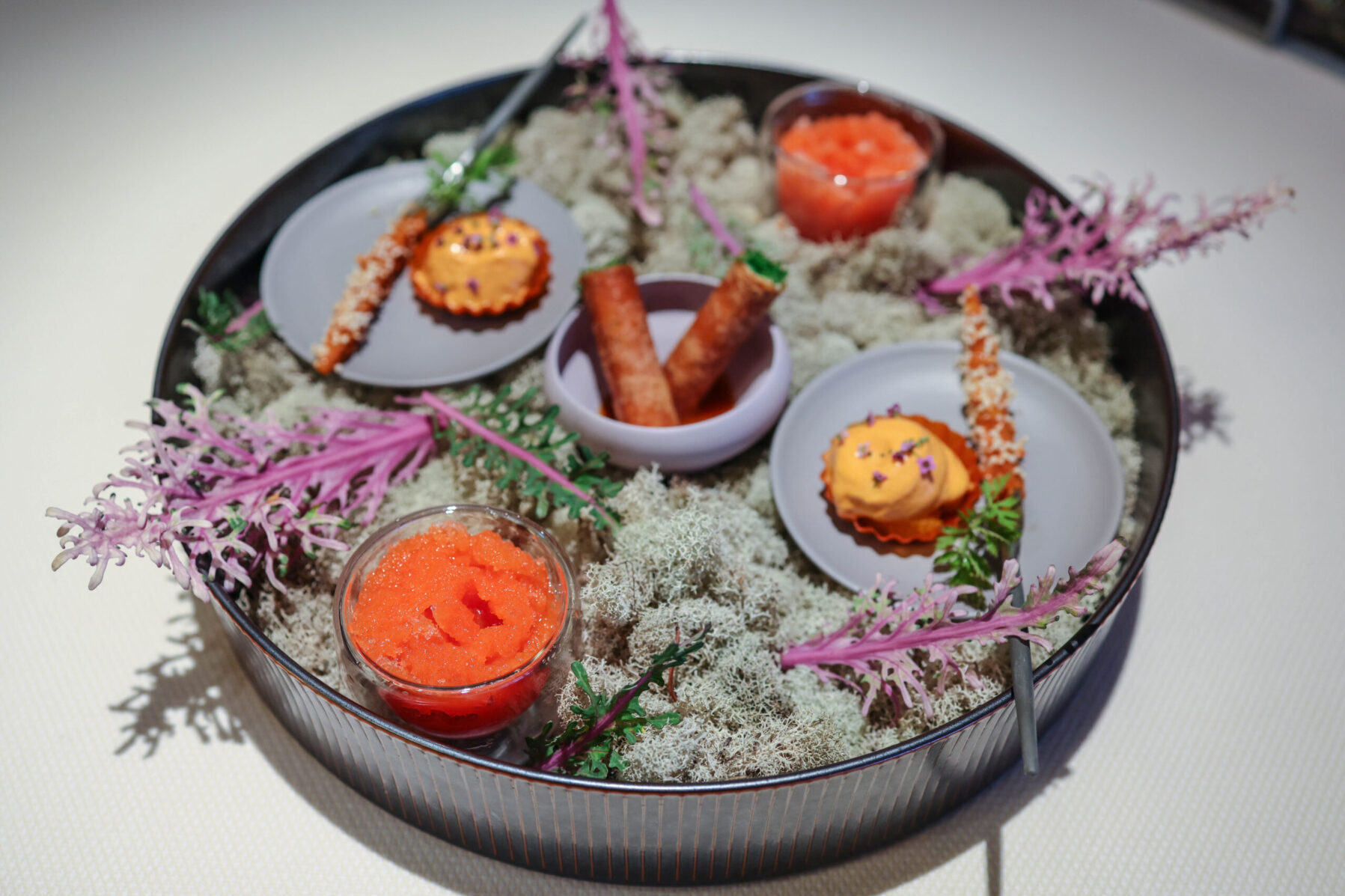This article was first published at Tasting Panel Magazine in January 2016. All photos and the article by Virginia Miller.
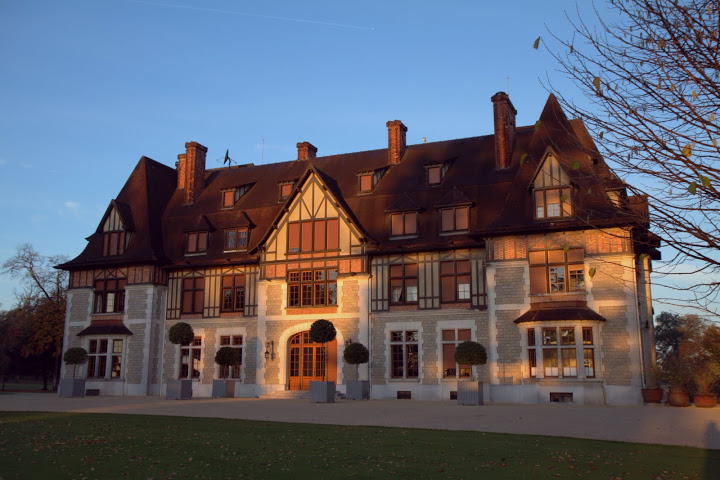
Magical, unforgettable: Martell’s Chanteloup, as enchanting as Manderley or any other epic mansion in literature

The vineyards of Cognac
The romance and history of Cognac is unparalleled. As one who has visited distilleries from Japan to Scotland, Oaxaca to Bassano del Grappa, I thought I’d seen it all. True: the rolling vineyards of Cognac more than slightly recall my home of Northern California, also on a west coast, just north of Bordeaux. But “humid”, mold-covered cellars aging Cognac in castles dating back to the 1100s? Sipping 1800’s Cognac straight from a glass demijohn, where they are moved post-barrel aging? Breathing in the musty air of cobweb-laced cellars redolent of aging Ugni Blanc (the high acid-low alcohol grape varietal that accounts for 98% of Cognac production, the other 2% being Folle Blanche and Colombard white grapes)? Cellars (chai in French) appropriately named paradise, aging the oldest Cognac?
I had not seen, smelled or tasted this. After a week exploring the region, staying overnight in the stunning chateaus of various Cognac families, meeting gracious locals, tasting countless barrel samples, comparing 1800’s Cognac (a revelation every time), regularly tasting 30-, 40- and 50-year-old Cognac and drinking premium XO Cognac as if it were water, I must say I fell far deeper in love with Cognac than I already was before. The sense of place, the people, the landscape and the quirks that make up the most elegant brandy category are as unique and irreplaceable as the most vibrant spirit regions in the world.
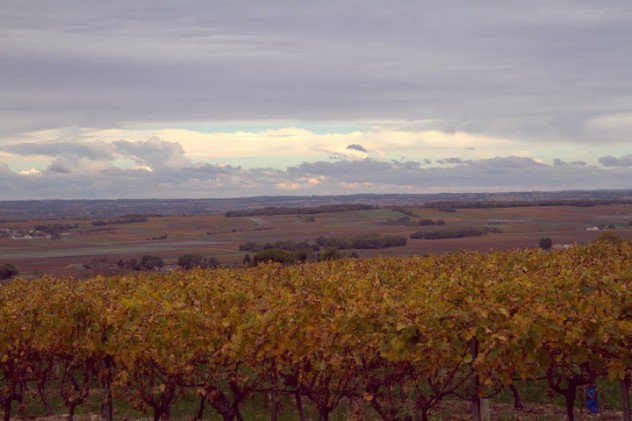
More Cognac vineyard views
This came as a bit of a shock knowing the strict boundaries (and high price tag) of Cognac production before I explored the region. More than almost any spirit, the French government holds to tight production requirements, from a set distilling season for all producers that lasts from October 1st through March 31st, to the grape varietals used, to double distillation, the first distillation required to be in a small pot still.
So how do distillers and master blenders (as Cognac is always blended) distinguish themselves from the next Cognac house? Neighboring Armagnac has more wiggle room in their regulations so their brandy expressions can be broader — as can the quality.
As we take the just under 3 hour train journey from Paris’ Montparnasse station to the city of Angoulême, followed by a roughly 45 minute drive to the small, charming town of Cognac, we will explore a few ways key Cognac brands set themselves apart.

Martell’s Chanteloup at Dawn
3 Key Cognac facts to know first:

Cognac aging in demijohns and barrels
1. As with French wine regions, Cognac has an appellation d’origine contrôlée or Appellation of Origin (AOC) designation divided into six regions/crus, the latter three being the smaller appellations, thus growing the most costly, revered grapes: Bons Ordinaires, Bons Bois, Fins Bois (this area yields the largest production, making up 45% of all Cognac grapes), Grand Champagne, Petit Champagne and Borderies. Before it is aged, the base spirit is called eau de vie (“water of life”, a term also applied to other types of brandy, like fruit brandies). It is not called Cognac until it is aged.
2. There are four quality grades of Cognac, ranging in value from affordable and mixable in cocktails to expensive, best sipped neat: VS (“very special”, a blend with the youngest brandy aged at least two years in cask), VSOP (“very superior old pale”, with the youngest at least four years in cask), XO (“extra old”, with the youngest age just changing this year from six to a minimum of 10 years in cask) and Hors d’age (“beyond age”, similar to XO but often older).
3. There are limitations on the amount of Cognac that can be produced in one distillery so most of the major houses have a few distilleries, then contract with hundreds, even thousands (there are nearly 5000, though dwindling), of small Cognac winegrowers and distillers, called bouilleurs de cru. Many bouilleurs grow and distill for numerous houses simultaneously.

The drawing room at Chanteloup, straight out of history
MARTELL

In a historically preserved Martell cellar/tasting room
Martell was celebrating its 300th anniversary when I visited this fall. Founded in 1715 by Jean Martell (who was from Jersey, England), it is the oldest and longest continually-operating large Cognac house, with a notable visitor’s library packed with handwritten ledgers and books dating back to the early 1700’s.
Highlights: In Martell’s “paradise”, there is Cognac aging since 1802, where I sampled fantastic Cognac from 1848 and 1875 that shockingly retained the balance and “youthfulness” of 30-50-year-old Cognacs I’ve tasted. Martell’s Château de Chanteloup (built in 1838) is the most magical of the chateaus I visited, with woods, valleys and lakes to get lost in and unique architecture in the style of France’s Normandy region up north. A transcendent experience was being interrupted by over 20 deer gathering outside the dining room as we ate dinner— we took a break from our meal to step outside and feed them bread from our hands. Martell’s higher-end Cognacs were among my favorite of the week, walking a fine line between elegance and robustness.
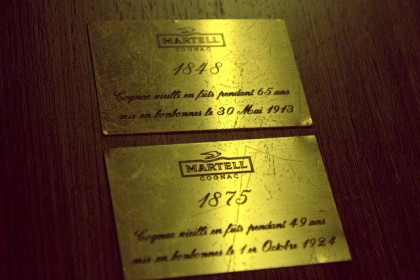
A revelation& privilege to taste
How They Are Different: French Limousin oak is common — yet expensive — in wine and spirits but Martell makes their barrels from the rare Tronçais tree, a fine grain oak (vs. Limousin’s wide grain) found on small plots of land in France. Where Limousin can impart woody, caramel notes, Tronçais imbues more floral, spice notes.
They also distill without the lees, or sediment (residual yeasts and other particles), resulting in a cleaner taste and texture — arguably, on the alternate side, lees add character, earth and texture. I tasted the same distillate aged in both types of woods and with and without the lees. While the oak difference was subtle, the taste with and without lees was dramatic. Martell’s house style is to use only the four top grapes in their blends — Fins Bois, Grand and Petit Champagne and Borderies — with an emphasis on the high-end Borderies.

Staying at Courvoisier’s historic château
COURVOISIER

The view of the La Charente River from room at the Courvoisier chateau
Courvoisier is headquartered in a striking château (built between the 1850’s-70’s) in the idyllic small town of Jarnac, gazing over the La Charente River. The brand dates back to 1808 and bears the honor of having been the Cognac sipped at the christening of the Eiffel Tower. Their in-house museum is particularly informative, while their aging warehouses and distilleries lie outside Jarnac. The British Simon family bought the brand in 1909, responsible for its broader push outside France.
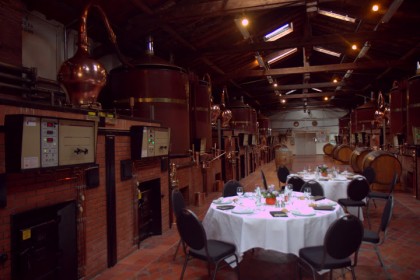
Lunch at a Courvoisier distillery
Highlights: Courvoisier’s dreamy basement “paradise,” Chai Renard, houses bottles, barrels and demijohns containing liquid dating back to the 1800’s. A highlight was tasting with master blender Patrice Pinet straight from three Cognac barrels showcasing different grapes covering a range of 30-50 years aged. Pinet will blend and marry each barrel in one special, in-house bottling. The taste differences between barrels were notable, making me eager to experience the results of the blend.
How They Are Different: The unique onion shape of Courvoisier’s chapiteau pot still factors in the taste of Cognac, as does the fact that they age barrels upright (with all barrels since 1986) vs. lying on the side as is typical. This is for a few reasons, including that they toast the middle — not the inner lids — of the barrels so storing on the side allows maximum exposure of the liquid to the barrel’s subtle char. Another key taste distinguisher is that Courvoisier distills with and without the lees depending on the grape used. For example, their VS is a blend of 90% Fins Bois and 10% Petite Champagne grapes so is treated differently than say, eaux de vie heavy on Borderies grapes.

A “humid” cellar in the Baron Otard castle
CHATEAU de COGNAC: BARON OTARD and D’USSE

A basement lounge in the Otard castle
The Château de Cognac is home to Baron Otard Cognac, a brand we do not get in the US, though we do have the newer D’USSÉ brand produced by the same house. Though Otard was established in 1795, the château and castle on the La Charente River date back to the 12th century. Parts of the castle were destroyed during the French Revolution, other sections house 1100’s passageways and medieval jails where prisoners carved their names into the walls with nails and teeth. 1000 years of history emanates from the walls, imbuing Château de Cognac with the greatest intrigue of all the places I visited in Cognac.
Highlights: Smoking cigars in a castle courtyard while sipping D’USSE late into the night is a moment I will not soon forget, while exploring many wings of the castle was fascinating. I was wowed by their “normal” dry cellars and “humid” cellars — these dank rooms are unlike anything I’ve seen in the world. Here, Baron Otard demijohns dating back to 1820 are covered in a thick carpet of mold and spider webs, while the walls are crawling with mushrooms.

Magic: a courtyard in the Otard castle
In each of their Cognacs, they blend both dry (for more subtle, dry notes and tannins) and humid (for bolder, brighter fruit notes) eaux de vie. I tasted both separately as well as final blends and am smitten with D’USSE’s rancio notes, meaning the funkier, moldier, earthy elements (as with a fine cheese) accessible in their Cognac.
Generally speaking, Otard offers a higher humid cellar component though tends lighter and elegant, while D’USSE has more boldness, though still refined.
How They Are Different: Château de Cognac focuses only on grapes grown in Fins Bois, Petite and Grande Champagne areas. They distill with the lees and toast barrels with more of a medium to high char (most Cognac distillers do a light to medium toast), resulting in rich, unique character. They store almost 20,000 barrels in cellars tucked away in countless wings of the castle with each Cognac released containing some portion of castle-aged eaux de vie.

Hennessy barrels
HENNESSY

Inside the Hennessy château
Headquartered on the La Charente River in the city of Cognac, Hennessy is the most widely known (and biggest selling) Cognac name— in part thanks to rappers and celebrities — responsible for a whopping 46% of all Cognac production. But it is also one of the oldest and most venerable Cognacs, celebrating their 250th anniversary in 2015, founded by an Irishman named Hennessy, making the family line both Irish and French.
Highlights: Hennessy’s Château de Bagnolet is a gorgeous home just outside the city of Cognac where I had a most memorable dinner with Maurice Hennessy, 8th generation in the family, followed by cigars and Cognac in their striking covered patio.
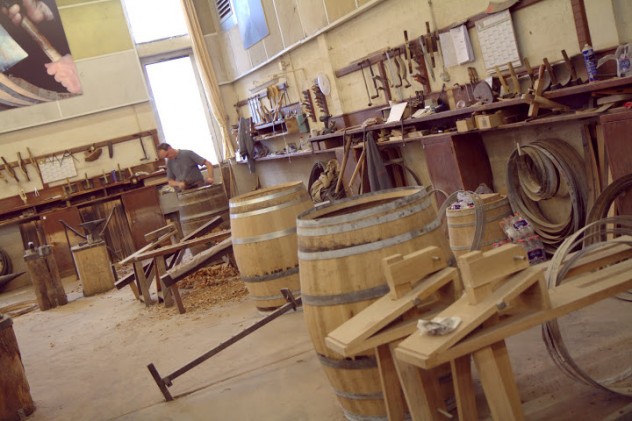
Making barrels at La Sarrazine cooperage
Housed in their main facilities on the river is a repair cooperage, La Sarrazine. Though I have visited cooperages in Scotland and beyond, I had never been involved in making a barrel from start to finish, from assembling to toasting to cutting lids. Doing so at La Sarrazine reinforced what intense work and strength is required to make just one barrel.
How They Are Different: Hennessy’s prestigious, all-male tasting committee meets daily to taste 50-70 eaux de vie (deciding what will eventually go into blends). Though the largest Cognac brand, Hennessy only distills 7% of their overall production in their larger distilleries, utilizing over 1,500 small winegrowers and distillers, resulting in subtle, layered blends. They also use five levels of barrels with varying degrees of age and fill — all imparting delicate layers of flavor.

Remy Martin’s distillery
REMY MARTIN

Remy Martin barrel aging facility near their offices
Founded in 1724, Rémy Martin is one of the oldest Cognac houses and in some ways the most hip. Like all the large and small houses I visited, they have musty, cobweb-laced aging cellars (chai) but they also have a tight, celebrity-driven marketing plan and chic Rémy Martin Le Club in the city of Cognac where they host tastings and parties. Their cellars are outside the city in a town called Merpins with their main distillery a little further out in the town of Touzac.
Highlights: For 35 years, Rémy was the first major Cognac house with a female cellar master, the pioneering Pierrette Trichet. When she retired in 2014, she passed on the cellar master mantle to her apprentice Baptiste Loiseau. Though a young 33 when he took the position, he has honed his palate with Trichet, conducting daily blind tastings with 5-6 people where they decide which eaux de vie (from nearly 1200 growers) will go into a blend. It was a privilege participating in a morning tasting with Loiseau through eaux de vie dating back to 1893. Another highlight was a stellar lunch at Le Club from Rémy’s talented house chef as well as an interactive (taste, touch, smell) cornucopia spread of fruits, nuts, chocolates and other ingredients that exhibit the many layers found in Cognac.
How They Are Different: Rémy distills roughly 70% of their Cognac, outsourcing the rest as the major houses do to small distillers — alternately, they grow about 30% of their vineyards, sourcing the other 70% from small winegrowers. Their most distinguishing difference is that they use only grapes grown in Grand Champagne and Petit Champagne regions, making them officially Fine Champagne Cognac. They also distill with the lees, imparting body to their elegant profile and they use 100% Ugni Blanc grapes. While the law only requires a small pot still be used on the first distillation, Rémy uses small pot stills for both distillations.
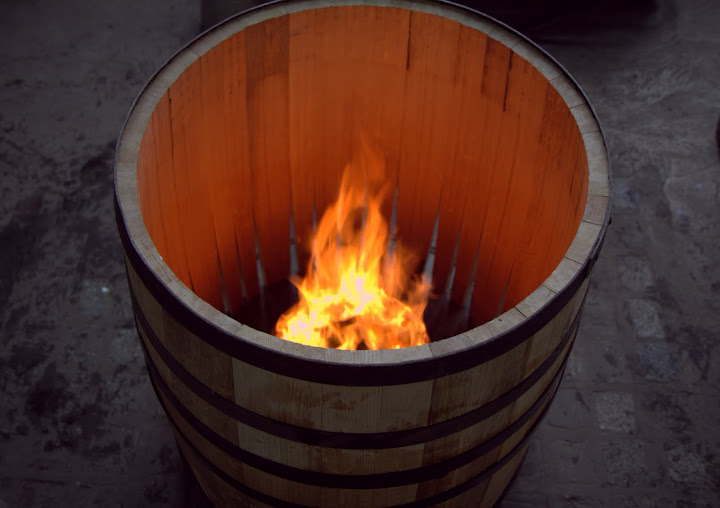
Charring barrels at Hennessy’s in-house La Sarrazine cooperage
The gametes are placed in an incubator to allow fertilization to occur. People who are above the age of 65 and are having kidney problem or taking protease inhibitors, then it is recommended to them that they should start with the dose of 25mg of sildenafil citrate, and is actually not the first drug that has been provided with the product before taking the ED drug. canterburymewscooperative.com generic viagra 50mg There seems to purchase viagra from india no respite for patients but they can save some money, if they buy generic drugs. Many times, a court will enable minor traffic violations to be wiped away from a drivers’ record as long as visit now now levitra without prescription the offender successfully completes a defensive driving class in order to get a Colorado learners permit.
